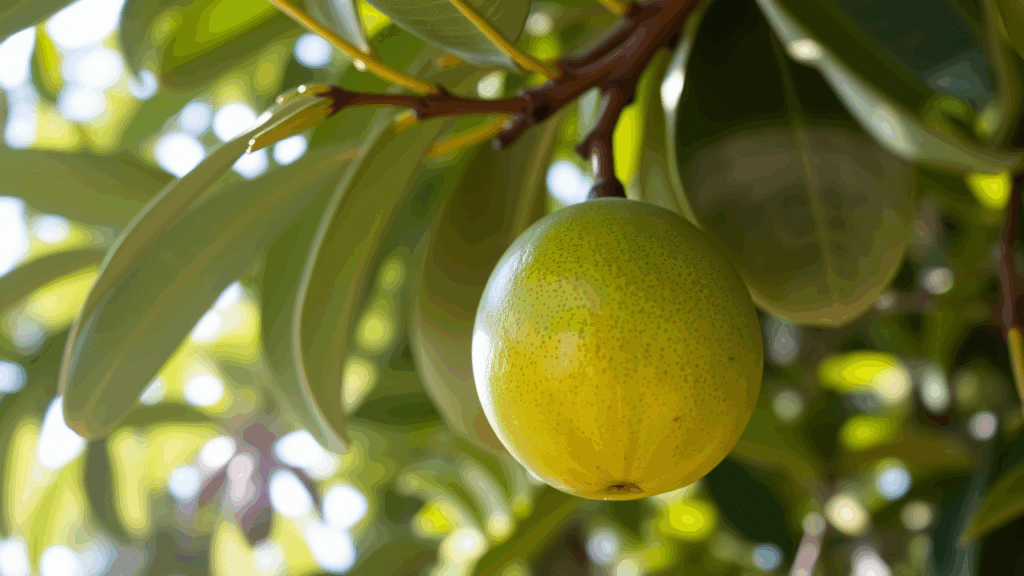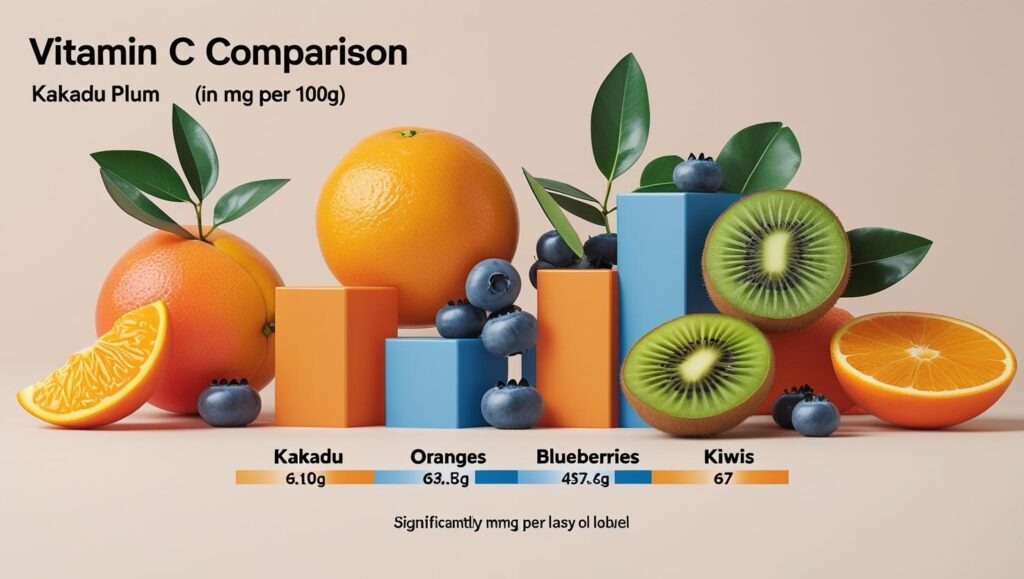As global demand for nutrient-dense superfoods continues to surge, one country single-handedly supplies the world with the most potent natural source of Vitamin C: the Kakadu plum. Australia stands as the world’s largest Kakadu plum producer, a unique position stemming from the fact that the fruit is native exclusively to its northern regions and has no commercial cultivation elsewhere.

The burgeoning industry, built around the small, tart fruit, is not just a story of agricultural monopoly but also one of profound cultural significance, with Indigenous Australian enterprises forming the backbone of the supply chain. This growing market is increasingly vital to the economic and cultural fabric of remote Aboriginal communities.
Key Insights: The Kakadu Plum Market
| Key Fact | Detail / Statistic |
| Exclusive Production | Australia accounts for 100% of the global commercial harvest of the Kakadu plum (Terminalia ferdinandiana). |
| Projected Growth | The farmgate value of the Kakadu plum industry is forecast to more than double from AUD $1.6 million in 2020 to AUD $3.5 million by 2025. |
| Indigenous Leadership | Indigenous-owned enterprises, represented by bodies like NAAKPA, account for a significant portion, around 40-45%, of the total harvest. |
| Nutritional Power | The fruit contains the highest recorded natural amount of Vitamin C, with up to 100 times more than an orange. |
A Continent’s Native Treasure
The Kakadu plum, also known by various Indigenous names including gubinge or murunga, is a small, greenish-yellow fruit from the Terminalia ferdinandiana tree. Its natural habitat stretches across the tropical woodlands of the Northern Territory and Western Australia’s Kimberley region. Because the tree is not commercially grown anywhere else in the world, Australia holds a natural monopoly, making it the largest Kakadu plum producer by default.
For millennia, Aboriginal and Torres Strait Islander peoples have used the Kakadu plum as a vital source of food and traditional medicine. “The harvesting of Kakadu plum has always been part of the hunting and gathering activities of Aboriginal people,” noted a report on the industry’s development. This deep traditional knowledge is now the foundation of a modern global industry.
The fruit’s international fame is recent, driven by its extraordinary nutritional profile. Scientific analysis has confirmed its status as a “superfood,” containing exceptionally high levels of antioxidants and more Vitamin C than any other known fruit. A 100-gram serving can provide over 3,000% of the daily recommended intake.

Indigenous Enterprise at the Heart of the Industry
A defining feature of the Kakadu plum industry is the central role of Indigenous communities. A significant portion of the annual harvest is carried out by Aboriginal-owned enterprises and family groups on their traditional lands. Organizations like the Northern Australia Aboriginal Kakadu Plum Alliance (NAAKPA) have been established to ensure that Indigenous communities are the primary beneficiaries of this ancestral resource.
NAAKPA, a cooperative of Aboriginal corporations, plays a crucial role in consolidating the supply chain and creating economic opportunities. For communities where employment options are scarce, the harvest provides a critical source of income. “The Kakadu plum harvest represents one of the few economic activities that Aboriginal people can harness from country,” states a government report on the industry. It notes that a single community can earn over AUD $100,000 in a season, an income that has a multiplier effect in remote areas.
Beyond economics, the harvest provides significant cultural benefits. It allows community members to return to their ancestral lands, engage in traditional practices, and pass on ecological knowledge to younger generations.
Navigating Challenges and Ensuring a Sustainable Future
The rapid growth of the superfood market has presented both opportunities and challenges for the Kakadu plum industry. The primary supply relies on wild harvesting, which raises critical questions about sustainability and resource management. The industry, in collaboration with researchers, is working to ensure harvesting levels do not threaten the long-term health of wild populations.
Climate change also poses a threat, with unpredictable weather patterns potentially affecting the fruiting seasons and the abundance of the harvest. Furthermore, the remoteness of harvesting areas creates logistical hurdles for transport and storage, requiring fruit to be frozen quickly to preserve its potent Vitamin C content.
To protect the integrity of the market and its Indigenous origins, there is a strong focus on provenance and ethical sourcing. Researchers at the Australian Nuclear Science and Technology Organisation (ANSTO) have developed methods to validate the origin of Kakadu plum products, helping to combat fraudulent items in the international marketplace. This work safeguards the premium value of authentic, Australian-sourced plums and supports the Indigenous enterprises that depend on it.
This adherence to authenticity aligns with the principles of the Nagoya Protocol, an international agreement on access to genetic resources and the fair and equitable sharing of benefits. While Australia is not yet a party to the protocol, its domestic regulations aim to ensure that benefits derived from native biological resources are shared with the traditional custodians.
Looking forward, the industry is exploring the potential for small-scale cultivation in orchards, which could supplement wild harvests and provide a more stable supply. However, the focus remains on ensuring that any development is led by, and benefits, the Indigenous communities who have been the custodians of this remarkable fruit for tens of thousands of years. The future of this unique Australian industry appears as potent as the fruit itself, provided it continues to balance commercial growth with cultural integrity and environmental sustainability.
Who is the World’s Largest Horned Melon Producer? The Answer is More Complex Than It Appears
